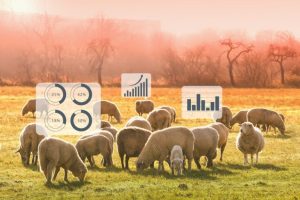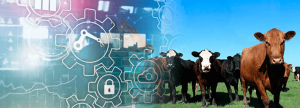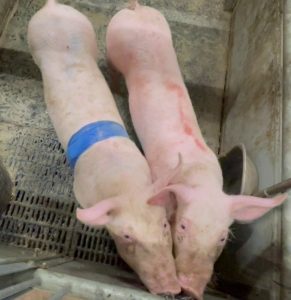nutriNews International sat down with Dr. Suresh Neethirajan to talk about the benefits of implementing PLF technologies in livestock farming. Dr. Neethirajan is a professor and industry consultant, and a part of Farmworx at Wageningen University in the Netherlands.

“Modern technologies and digitization can allow livestock producers to optimize their operations. Creating more efficient production systems, reducing environmental impacts,lowering production costs, and enhancing productivity.”
nutriNews International sat down with Dr. Suresh Neethirajan to talk about the benefits of implementing PLF technologies in livestock farming. Dr. Neethirajan is a professor, industry consultant and a part of Farmworx at Wageningen University in the Netherlands.
Dr. Edgar Oviedo: Hello to all of our audience. We would like to welcome Dr. Suresh Neethirajan! It is a pleasure to have you with us as part of our series of interviews for nutriNews International. We know that you have had the opportunity to work in several places around the world, gaining considerable experience in your field of expertise. However, I think it would be best if you could tell us a little more about yourself, and about your current work.
Dr. Neethirajan: Thank you Edgar, and thank you Agrinews for this invitation to share with members and stakeholders of the community. In regards to my background, I am a professor, researcher, and industry consultant in the area of Digital Livestock farming (DLF). I have had different work experiences in North America, Europe, and Asia. I am currently based in Wageningen University in the Netherlands developing solutions and also consulting with several industries, looking at how we can incorporate Precision Livestock Farming (PLF) for enhancing animal welfare and productivity.
Dr. Oviedo: Suresh could you explain what PLF means, and why it has gained so much attention in the past decade?
Dr. Neethirajan: Yes, so when we say DLF or PLF, Precision Livestock Farming or Digital Livestock Farming it is basically a technology driven approach. Making use of sensors, data analysis, computer vision and other computer driven analytical tools used for optimizing animal welfare, productivity, and efficiency. Nowadays consumers are giving a lot of importance on sustainability and ethical farming practices. As they are more concerned regarding the environmental impacts associated with farming activities. PLF technologies represent a methodology through which farmers can monitor animal welfare, as well as the environmental impact of their production systems, in order to meet these specific demands from the public.
There have also been drastic advancements in technology, which has allowed for these technologies to become more affordable and accessible to the farmers. This has facilitated the use of digital tools and technologies to monitor and manage their livestock more efficiently. In the past few years there has also been a growing awareness regarding data driven decision making among the farming community. Thanks to this greater awareness from the farmers regarding the benefits of PLF technologies, their implementation allows to collect data for optimizing livestock production.

We can also look at this topic from the following perspective. We have recently come out of the Covid 19 pandemic and there’s a big focus on food safety and security. The global population is growing, and we are about to reach 8 to 9 billion people, so there is an increased concern regarding food security. Putting greater pressure on the farming community to increase their productivity and the efficiency of livestock farming. Therefore, these are all factors that have driven the attention towards PLF technologies ad their adoptions amongst the farming community.
Dr. Oviedo: Can you give us an example to help us understand how these types of technologies contribute to the optimization of resources and their applicability within livestock farming?

Dr. Neethirajan: Yes, sure. PLF technologies help farmers optimize their use of resources in many ways.

Tools, like:
are all examples of platforms and technologies that can be incorporated to achieve efficient and sustainable animal production systems….

You can watch the full interview on the following Youtube link:
You may also be interested in reading: “Monitoring Nutritional Utilization in the Digital Age.”
Subscribe now to the technical magazine of animal nutrition
AUTHORS

Nutritional Interventions to Improve Fertility in Male Broiler Breeders
Edgar Oviedo
The Use of Organic Acids in Poultry: A Natural Path to Health and Productivity
M. Naeem
Synergistic Benefits of Prebiotics and Probiotics in Poultry, Swine, and Cattle
Gustavo Adolfo Quintana-Ospina
Hybrid Rye Potential in Laying Hen Feed Rations
Gwendolyn Jones
A day in the life of phosphorus in pigs: Part I
Rafael Duran Giménez-Rico
Use of enzymes in diets for ruminants
Braulio de la Calle Campos
Minerals and Hoof Health in the Pregnant Sow
Juan Gabriel Espino
Impact of Oxidized Fats on Swine Reproduction and Offspring
Maria Alejandra Perez Alvarado